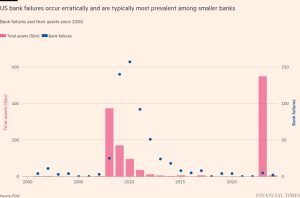What the world’s best chef serves you for €450
This article is part of FT Globetrotter’s guide to Madrid
Dabiz Muñoz’s Mohican is a declaration of intent. The man hailed as the world’s best chef — not just once but three years in a row — sports a spiky crest whose punkiness symbolises the subversions and inversions of his cooking.
Brought up in a working-class neighbourhood of Madrid, he has climbed to the top by turning his DiverXO restaurant, nestled in a drab hotel tower in the Spanish capital, into a playful laboratory of bleeding-edge taste sensations. Whether it’s sour kimchi ice cream, or ox bouillon soup slurped from a bull horn, or a nigiri of tender hare meat on a clump of singed paella rice, the creations in his 18-course banquet defy classification. And that is the point.
Muñoz, whose restaurant boasts three Michelin stars, demolishes the staid country categories we use to describe food. This is post-national cuisine. When he serves up smoky caviar baked in a tandoor oven with Iberian ham fat, along with a crescent of wok-sautéed peas enclosing twin pools of creamy coconut-horseradish and pistachio-jalapeño sauces, it’s not Russian-Indian-Spanish-Thai-Mexican cuisine. It’s citizen-of-nowhere food.

“DiverXO is a place that knows no borders,” says Muñoz. “There are influences from many parts of the world, from all parts of the world, but you can’t say it’s a cuisine from any part of the world.”
And it comes at a price: the tasting menu, which is the only option, costs €450 per person. Two-thirds of its patrons are overseas visitors. Some Spaniards save up for a rollicking night at DiverXO instead of having a long weekend at the beach. The country’s stiff culinary traditionalists look askew at Muñoz. But that’s fine with him. “You can be relaxed. You don’t have to be serious,” says Muñoz. “I think that’s why we have clientele from many different walks of life.”


The biggest insult is to misunderstand Muñoz’s creations as fusion food. If you go to Thailand, learn how to make pad Thai, come home and do it with a few Spanish flavours, that’s fusion food, he says. “We don’t want to do that. When we come up with a dish we start from scratch,” he says. “What I want is for everyone who sits at a table in DiverXO to say, ‘Wow, this is unique.’”
His ingredient lists feel protracted, but the results are extraordinary combinations of sweetness and tartness, crunchiness and meltiness, presented with a Dalí-esque surrealism. Muñoz likens each dish to the symphony of an orchestra. “There are times when 30, 35 or 40 instruments are all playing at the same time, but you can’t pick out the flute or the violin. What you appreciate is that the melody as a whole is in balance.”
There is a gothic darkness to DiverXO’s marketing, which revolves around Muñoz (who was born David but adopted Dabiz to reflect how it sounds in a Madrid accent). The restaurant’s decor has touches of Alice in Wonderland and Tim Burton, with metallic ants climbing the stairs and ubiquitous ornamental pigs with wings (or Mohicans), a reference to Muñoz’s father’s prediction that pigs would fly before his son made it as a restaurateur.


But the restaurant is bright, almost clinical, with peaches-and-cream coloured lighting. Each table is large and pod-like, semi-sheathed by ceiling-high net curtains, which create a modicum of privacy but mean you can still see your neighbours and hear their laughs and coos.
At a recent dinner in September, we start with a flat slab of Pyrenean trout sashimi whose natural segments slide apart effortlessly in my mouth, complemented with a crayfish bathed in a tangy broth. Then there’s scallop ceviche and cockles in a sauce of coconut milk, tomatoes and kalamata olives, its chill and refreshing as a blast of cold air.
Next comes inspiration from a trip Muñoz took to Singapore with his one-year-old daughter: a whole kohlrabi arrives, its top cut off so it can hold a bubbly laksa soup of white asparagus and vanilla. There’s more: simulated shark-fin strips made with collagen and gelatin from the fish, and an egg yolk that explodes with the unexpected taste of chistorra sausage.


The food flows at pace — so much so that we have to warn the servers two dishes in advance if we need the toilet so that the chef can pause the machine. By the seventh dish, a man at the next table pleads jokingly to the staff: “You’re pushing us too hard.” But even after 18 I did not feel bloated — and that was with the extra input of a premium drinks pairing menu. It included a Dassai sake that seemed to vaporise in my mouth; a Château D’Yquem from 1969; and an acidic sherry the sommelier called “liquid pain”, which rasped down my throat. Most striking was a Viña Tondonia Rioja from the 1950s, so precious it was extracted via a hole in the cork with a Coravin to avoid oxygenation.
The wines wash down Asturian skate wing with Parmesan whey, Spanish sea cucumbers and a dish inspired by the afternoon snack Muñoz’s father used to make for him. A micro version of Madrid’s classic minutejo sandwich, it’s made with crispy pig skin instead of bread, which encases pecorino cheese, goose egg yolk and sriracha sauce lathered over the centre piece: cold cuts from the head of a suckling pig.
Nature, at DiverXO, is present in unvarnished form. We are introduced to a pinky-grey baby shark, curled up in a tray, which yields the faux fin strips. When I drain the spicy soup from the bull horn, I am hit by the reek of a farmyard stable. Then a server brings out the body of a free-range rooster we are about to eat, splays its legs and says: “He’s so cute.” A few days later, I ask Muñoz about the reasoning behind this ultra-realism.
“As a society we have denaturalised the animals we consume, and I think it’s important to know that the rooster is a living being, that it has a comb, a head and legs,” he says. “If you think that chicken comes in a plastic tray, it’s bad for sustainability . . . If you’re conscious it comes from a living being, you’ll think twice before throwing it away.”
The savoury courses culminate with Goa-inspired lobster covered in tandoori yoghurt, plus a panipuri dough ball filled with salmorejo tomato soup, brought to us on an elephant statue. Dessert comes in stages: nubs of bergamot orange, sweet miso and camel-milk ice cream, followed by soluble shards of blackcurrant bubblegum and a meringue with a touch of black garlic.

The chatty servers, who rotate into and out of our pod with balletic smoothness, introduce every dish with excitement about what we are about to experience, rather than concern that we stick to anyone’s prescribed gustatory norms. Muñoz says the “ceremony” and “tense silence” of other top-end eateries is something he wants to avoid. DiverXO manages to sidestep fine-dining’s pretentiousness trap partly because the staff keep it informal.
But the dreamier bit is done by the boss. Muñoz’s finale is mochis served on a pair of upturned top hats, a reference to the Mad Hatter, Willy Wonka and the surprises conjured up by magicians. DiverXO is “like a fantasy world”, he said. “But a little bit dark. It’s an amusement park for adults.”
Dabiz Muñoz has been named the world’s top chef for three consecutive years in The Best Chef Awards, as voted by a group of some 570 chefs, gastronomy experts and journalists
Barney Jopson was a guest of DiverXO. Tasting menus cost €450 per person (wine pairings start at €300). NH Eurobuilding, Calle del Padre Damián 23, 28036 Madrid. Website; Directions
Have you dined at DiverXO? Tell us about it in the comments below. And follow FT Globetrotter on Instagram at @FTGlobetrotter
Cities with the FT

FT Globetrotter, our insider guides to some of the world’s greatest cities, offers expert advice on eating and drinking, exercise, art and culture — and much more
Find us in Madrid, Copenhagen, Paris, Rome, London, Tokyo, New York, Frankfurt, Singapore, Hong Kong, Miami, Toronto, Melbourne, Zürich, Milan, Vancouver, Edinburgh and Venice
#worlds #chef #serves




